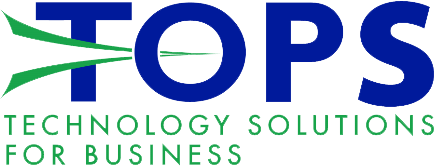Data Networks: What Are the Different Types and What Do They Do?
Many business owners know that having a reliable IT network is crucial to succeeding in the modern, technology laden markets of today. Your network is a crucial element to the sharing of information, both internally and externally. It is how your employees communicate, how you interact with your clients, and how cash flows in and out of your walls. Simply put, business activities are almost exclusively completed through networks in today’s world.
An IT network needs to be operational and effective, every minute, of everyday, for every user of organization. Depending on your industry, a few minutes offline could mean thousands of dollars in lost revenue.
Here at TOPS, we work with many different styles of businesses, in various industries, all across British Columbia. Every situation requires a unique technological solution, which is complimented by a multitude of data network variations. Business owners often inquire about the various types of data networks that can be utilized, so the team here at TOPS has collected that information in one location for you. Below we will briefly highlight the most commonly used data networks and what their purpose is.
LAN and WAN
Many business operators are familiar with the network names, LAN and WAN. These are the primary networks that are encountered at a basic level.
LAN stands for a “local area network”, and provides connectivity to a single site, such as an office building or school. A LAN system can be constructed with relatively inexpensive hardware and is great for sharing resources internally between workers, such as printers and data storage solutions. A LAN could consist of two computers or thousands of machines, and can be connected with Wi-Fi and ethernet applications. If a LAN network is completely wireless, it is referred to as a WLAN.
WAN stands for a “wide area network”, and is typically a more complex system than a LAN. A WAN can connect devices across longer physical distances and allows computers or devices to remotely connect to each other over a greater network. This allows individual users to communicate, even when they are many kilometers apart. The internet itself is an example of a WAN, connecting users all over the world. A WAN can contain multiple smaller networks within it, such as Local Area Networks.
Personal Area Networks (PAN)
A personal area network (PAN) is organized around a single user, within a single location. Typically you might find a PAN within someone’s home or in a small office setting, connecting various devices together such as telephones, computers and video game consoles.
This style of network is usually connected through a single wired connection, which can be shared throughout the small space, via a wired or wireless connection. This connection typical stems from a modem, which is a device that you likely have in your own home. Common uses of a PAN are streaming movies through a SMART television, or uploading photos from your camera to your desktop computer.
MAN oh Man…
If you deal with enough of these abbreviations they all begin to blend together. LAN, PAN, WAN… now MAN?
A MAN is a metropolitan area network, and is able to connect devices across a large area, such as a university campus or a town. A MAN can cover an area anywhere from a couple of square kilometers to tens of kilometers. This can be achieved by connecting several local area networks (LAN) together to form one larger network. If you work with or around colleges, this style of network can be referred to as a CAN, or college area network.
Data Network Solutions
There you have it. You now have a basic understanding of the common data networks that are utilized across the world. As a business owner, understanding your own data network can be extremely valuable when discussing expansion, security and information sharing.
Are you unsure of what type of network you are operating on, or need help maintaining and modifying your system? The TOPS team has you covered. TOPS provides all the benefits of having an internal IT department, for a fraction of the cost. Why worry about staffing an entire department, when you can have everything taken care of by experts, all for a reasonable fixed monthly cost?
No surprises, just effective technology solutions that will make your business more efficient and profitable. Contact us today to learn more – (250) 979-6700





